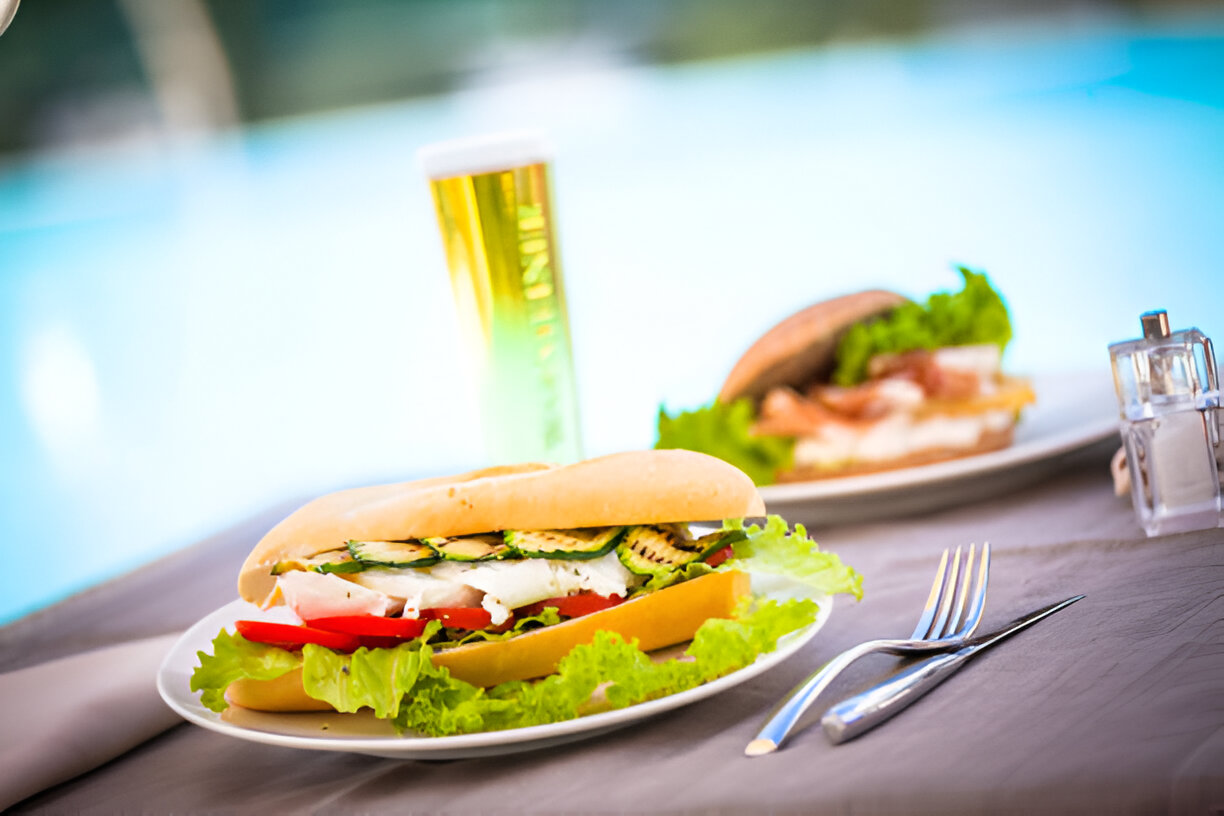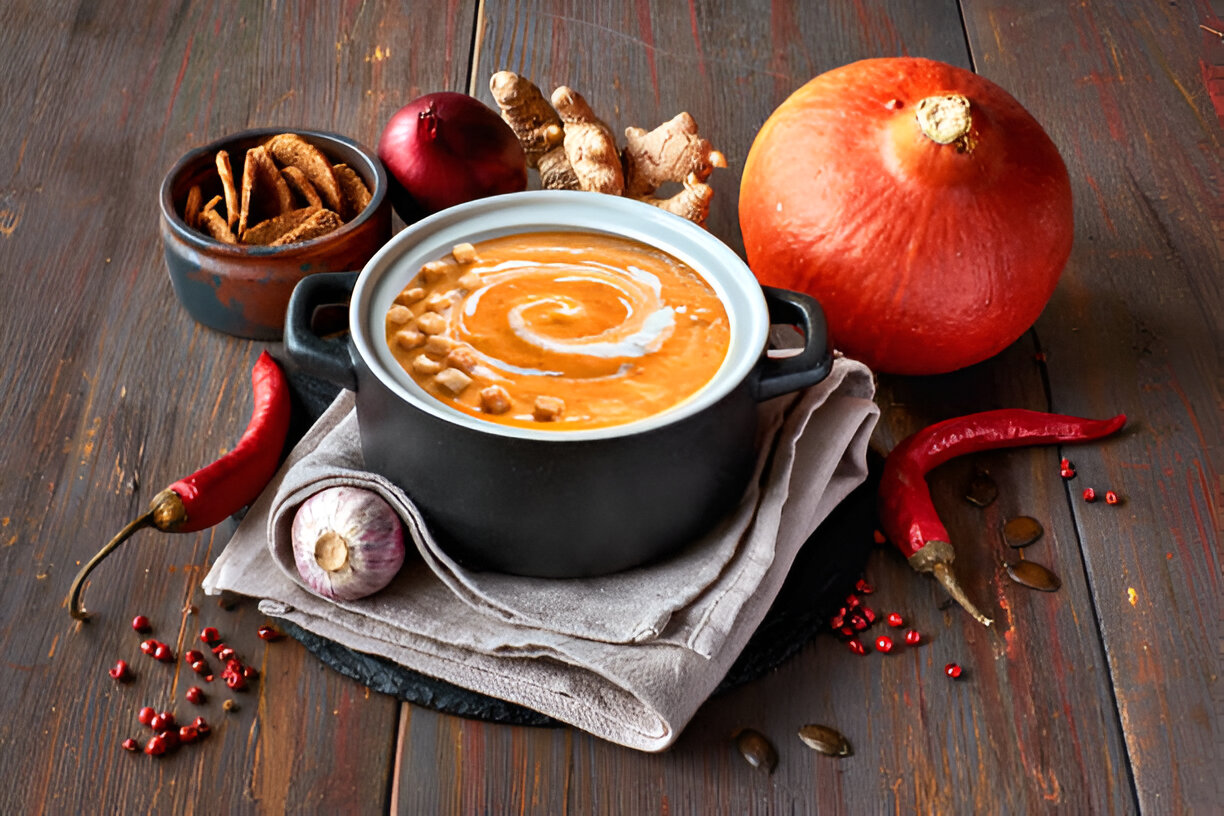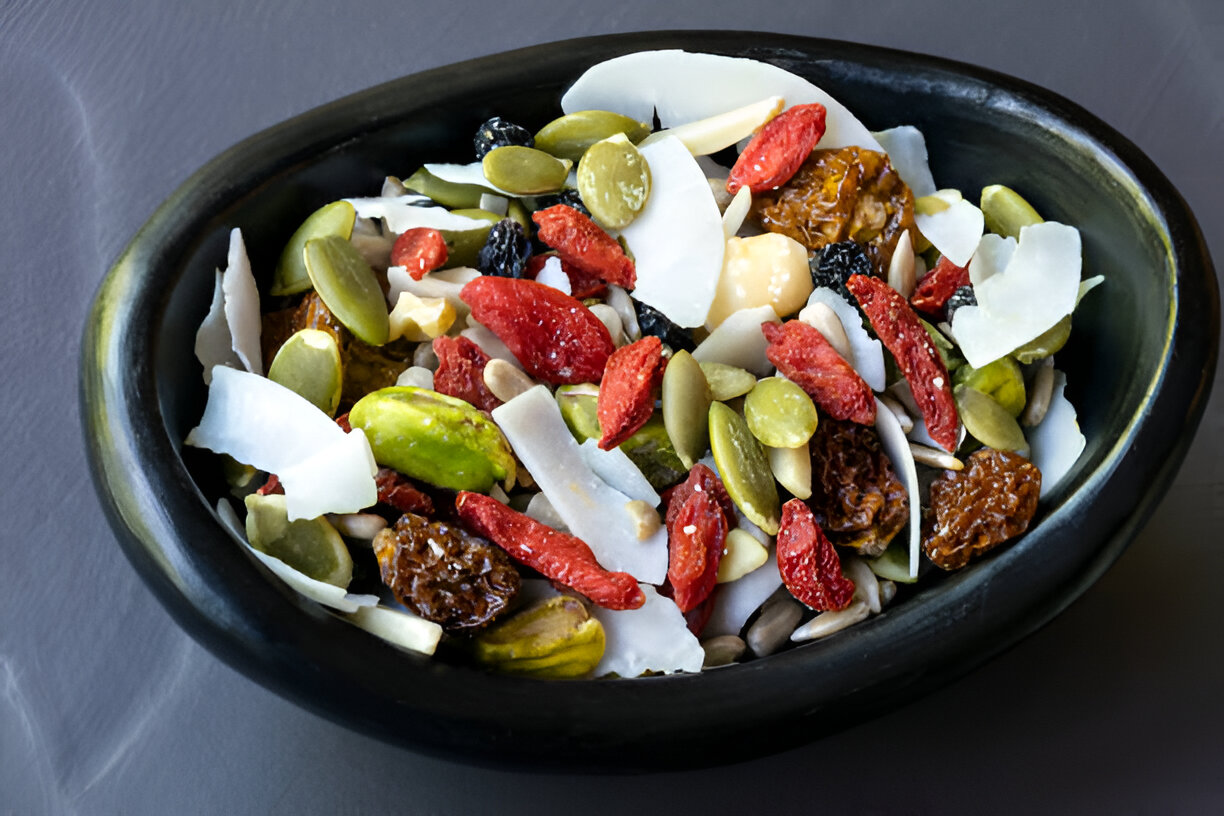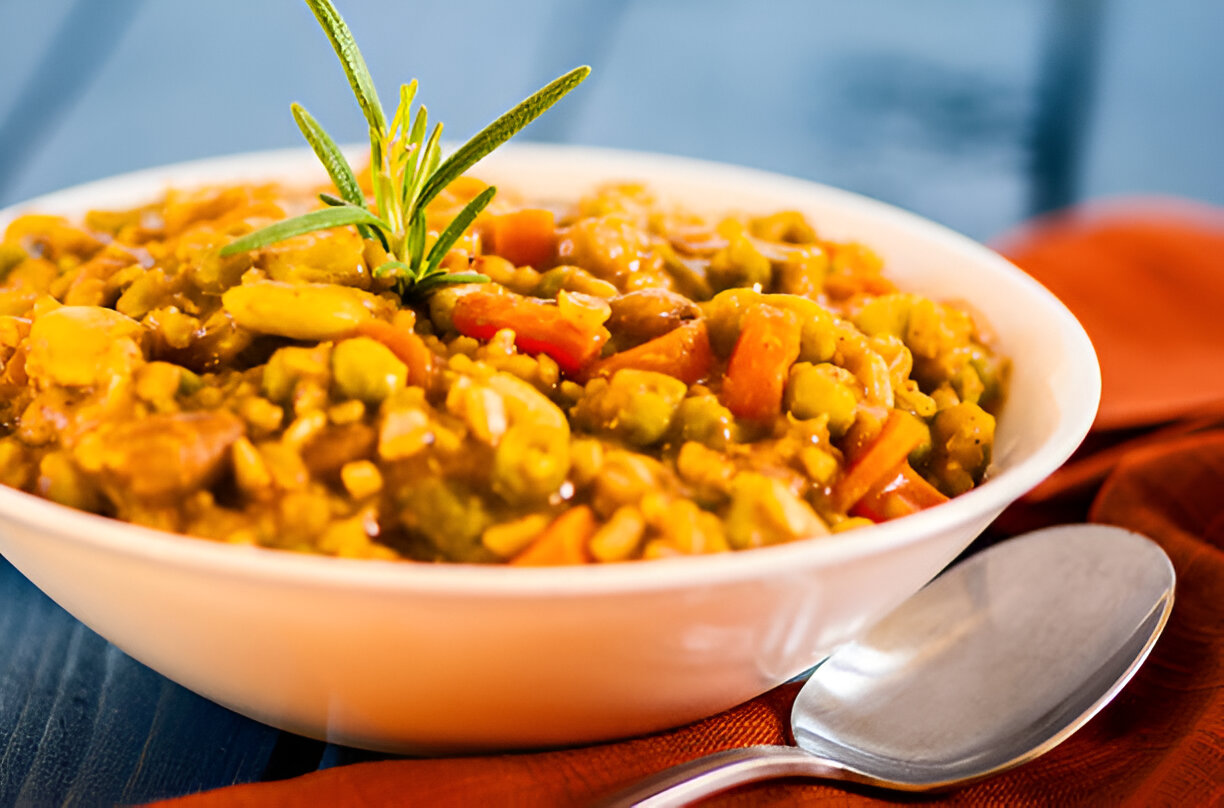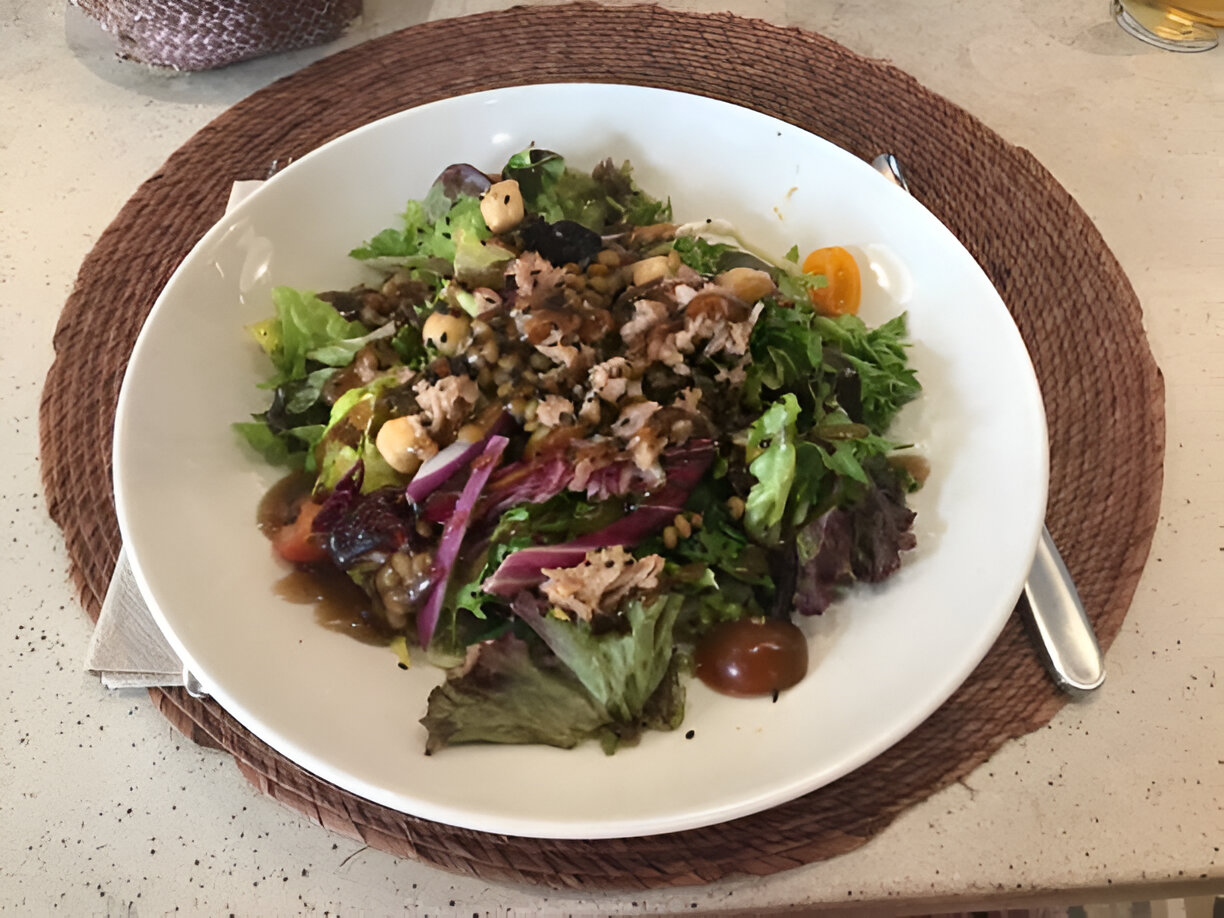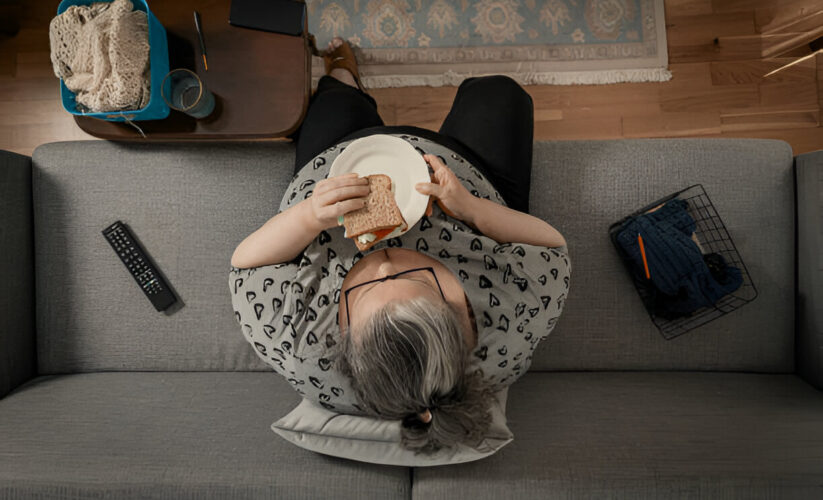
It’s no secret that maintaining a nutritious diet requires an awareness of what, when, and how much we eat. But here’s the catch: Many of our eating habits are just that — habits. Whether it’s snacking before dinner or eating on the run, we frequently fall into patterns with little thought at all. The potential consequences of habitual eating are anything but nourishing — it can lead to health problems ranging from poor digestion to weight gain, and an increase in the stress and imbalance in our lives.
Reversing unhealthy eating habits is not about following hard-and-fast diet rules. Instead, it’s about cultivating a new, conscious approach, one that starts with listening to your body. “Our systems are designed to know what we need to eat,” says Mary Taylor, a trained chef and coauthor of “What Are You Hungry For?: Women, Food, and Spirituality.” “We just need to tune in to those internal signals.” Taylor likens “conscious eating” to meditation, in which practitioners watch their thoughts come and go without judgment. Rather than giving in to every food craving or ignoring your body’s signals, you’ll begin simply paying attention.
“Mindfulness is the missing link when it comes to healthy eating,” says Ellie Krieger, a New York City-based registered dietitian and host of the Food Network’s “Healthy Appetite.” For lasting change, don’t try to overhaul your approach overnight. Start gradually, focusing on the following common pitfalls; then work on your own weak spots. Throughout, be gentle with yourself. In time, you may see improvements in not only your diet but also your overall sense of well-being. “Practicing consciousness about food does more than help you eat better,” says Taylor. “It’s a skill that has a way of spilling out into other areas of life.”
Old Habit: Speed Eating
New Motto: Slow Down and Chew
If there’s one time to curb the frenetic pace of your day, it’s mealtime. Eating too fast undermines healthy digestion and encourages overeating. Moreover, it precludes enjoyment. “We tend to ignore the sensory aspects of food — the smell of it, the look of it, the taste — and just shovel it in without paying attention,” says Krieger.
Intentionally engaging your senses can help you slow down. Taylor suggests making a simple “pledge of consciousness”: For the first and last bites of every meal for a week, check in and notice the way your food tastes and smells, and how your body feels. “You may only remember to do it 50 percent of the time,” she says, “but it’s a good starting point.”
Of course, paying attention to your food is tough if you’re distracted. For slowdown success, try to eat at least some of your meals in peace: no watching TV, no reading email or surfing the Internet, no jumping up to answer every phone call. “Do what you need to do ahead of time so that you can unplug and enjoy your meal,” Taylor says, again advocating a gradual approach. “If you can’t do it all the time, start by committing to just one distraction-free meal every other day.”
Old Habit: Portion Overload
New Motto: Less Is More
According to Dr. Lisa Young, author of “The Portion Teller: Smartsize Your Way to Permanent Weight Loss,” neither carbs nor fats are to blame for America’s obesity problem. The problem, she says, is volume: “When we pay no attention to how much we’re eating, we eat too much.”
Our supersize culture doesn’t help. “Dinner plates are bigger than they used to be, and restaurants serve gargantuan portions,” says Taylor. Keeping a few visual guidelines in mind can help: A 4-ounce serving of protein is about the size of your fist, while a cup-size serving of grains or starchy vegetables is the size of your palm. Leafy greens can be eaten with abandon, as long as they’re cooked without excess fat.
Being portion-conscious isn’t all about weights and measures, however. Tuning in to the aesthetics of food, says Taylor, actually encourages healthy portions. “In Japan, food is delicately arranged so you can see its beauty,” she says. “And in Chinese and Thai dishes, ingredients stand out without being overwhelmed by 10 other things.” So pay attention to the color, texture, and vibrancy of specific ingredients, she suggests, and when you cook with them, try to do them visual justice. “The goal is to develop a sense of aesthetics and balance,” says Taylor. Instead of heaping food on your family’s plates, you’ll be inspired to present each meal with care. Healthy portions are a natural result.
Old Habit: Daily Sweets
New Motto: Cultivate the Palate
It’s common to crave dessert at the conclusion of every meal, even though loading up on sugar isn’t in our body’s best interest. “We get habituated to having sweets as a final course,” says Taylor. “They also have an addictive quality; you can feel really deprived without them.”
Part of the problem, she explains, is that sugary foods can overwhelm your taste buds and dull your senses, making it harder to discern what your body really wants. (And according to traditional Chinese medicine, an overload of any of the five tastes — sweet, salty, sour, bitter, or pungent — can lead to an imbalance in the body.) One solution, suggests Krieger, is to wait 20 minutes after eating to decide whether you really need dessert, and then consider whether a few bites might suffice. “It interrupts the automatic aspect of the craving without always depriving yourself,” she says.
Another idea is to rethink your definition of dessert. Start by allowing your palate to experience the healthy side of sweet. “One of the best desserts I’ve ever had was simply sliced apples and pears with a sprinkle of cinnamon,” explains Krieger. “It was special enough and topped the meal off with a sweetness that was just right.”
Old Habit: Reckless Grazing
New Motto: Be Prepared
Pre-dinner snacking can ruin the best-planned meal, and it’s most common cause is simple: We’re too hungry to wait. Letting yourself get overly hungry can lower your blood-sugar levels — a surefire way to overeat. Keep in mind that your body starts to feel hungry from one to four hours after you’ve eaten even the most balanced meal, so if you haven’t had anything since lunch, you’re bound to nosh when you walk in the door.
You can prepare for this by eating a healthy late-afternoon snack (for instance, celery and almond butter, or yogurt) and by doing some prep work (chopping vegetables or cooking rice) in the morning so that you’re able to eat dinner earlier. But it’s also worthwhile to attune yourself to the symptoms of hunger — along with the familiar burning sensation in the belly, you might feel light-headed or have a dry mouth or a tight throat. These symptoms are similar to those of emotional states like stress and anxiety, says Krieger, and they can lead to supremely unconscious eating.
“The goal is to get out of what I call ‘eatwalking,’ that type of numbness where you aren’t even aware of what you’re consuming,” says Krieger. “I often have people keep a food diary so that they can become more mindful of what they’re doing.” Again, success comes from connecting the dots. “If you understand that you don’t feel like eating dinner because you’ve been grazing, for example,” says Krieger, “it gives you a new perspective and an opening for a new choice the next time around.”
Text by Sharon M. Goldman; photograph by Joseph Scafuro








